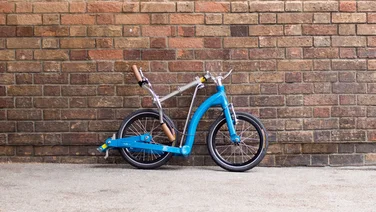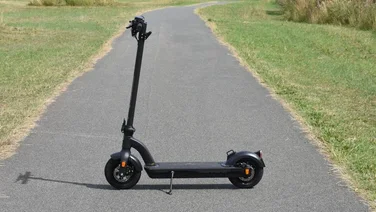To help us provide you with free impartial advice, we may earn a commission if you buy through links on our site. Learn more











The Ford Focus has been a familiar sight on Britain’s roads for the best part of a decade. Undeniably one of the most popular cars in the UK, the Focus is well known for value and reliability but isn’t famous for being at the forefront of in-car technology.
Ford is hoping to change these perceptions with the newest version of the Focus, which has more technology as standard than a luxury BMW 7-series. We headed up to the Magna Science Centre in Sheffield, originally the home of Templeborough steel works, for a hands-on test of the gadgets inside the car.
Driver assists
Possibly the most impressive piece of technology fitted to our test car was the Active Park Assist function. This is an option on the Titanium and top-end Titanium X models, and means the car can now take over if you have trouble with parallel parking.
The video below was filmed in 3D. To watch it with on a 3D TV or monitor, click on the 3D button and select side-by-side. If you don’t have a 3D screen, you can still watch in 3D, but you’ll need a pair of red and blue glasses. Click on the 3D button below the video and select the Red/Cyan option. Make sure the colours are round the right way using the options. If you prefer to watch in 2D, click on ‘no glasses’ then change the mode to ‘left only’.
When the driver presses the parking button, sensors around the car start scanning the distance between parked cars. When a suitable space is found, a message appears on the screen in the centre console telling the driver to stop. With the accelerator and brake controlled by the driver, the car steers itself into the space, prompting when to change between reverse and first gear. Another message flashes up when parking is finished, which should help a lot of people get into spaces that they might otherwise avoid using. Of course, driving out again is entirely up to the driver.
Even if you prefer to park without assistance, the optional Park Pilot detection system helps prevent knocks and scrapes. A three-stage audible and visual warning system lets you know if you’re getting too close to another car or an obstacle.
Our initial impressions inside the car were positive. The new Focus comes with Bluetooth as standard. This is for making hands-free calls, and is normally an optional extra in family cars in the same price range. Audio support is also impressive, with an auxiliary input (for your MP3 player), a USB port (for a USB flash drive full of music, or an iPod) and DAB digital radio included as standard.
Every new Focus also comes with air conditioning, but climate control is only standard on the Titanium model. The trip computer, a colour LCD screen which takes centre stage in the instrument cluster, can display useful information such as fuel economy. It’s helpful by itself, but if you spec a car with some of the optional extras, it becomes far more useful.

On models with the EcoBoost petrol engine, the car actively monitors your driving style and shows how to drive more economically. A shift indicator highlights the best time to change gear for better fuel efficiency and a flower symbol shows how economically you are driving. If you frequently accelerate or brake harshly, fewer petals will be shown, but more careful drivers will see the full flower. Used in conjunction with the stop-start function that cuts out the engine when stopped in traffic, Ford says drivers could see savings of up to 10 per cent on their fuel bills.
A lot of cleverest safety features are included in the £750 Driver Assist pack. A front-facing camera sits in front of the rear-view mirror, scanning the road up to 40m ahead for signs including overtaking restrictions and changes in the speed limit. When it recognises a new sign, the relevant symbol is automatically displayed on the screen in the instrument cluster so the driver can always be sure they aren’t breaking the law.

As well as the camera, a front-facing laser helps reduce accidents in slow-moving traffic by detecting objects in close proximity. If the car in front suddenly stops and the driver doesn’t notice, the Focus can automatically activate its brakes to prevent an accident, as long as you’re travelling less than 9MPH. At speeds between 10 and 20MPH, the system can’t prevent an accident but it can substantially reduce any damage caused. Ford says the laser used in the system is the same model NASA uses to measure the distance between the earth and the moon, but in the new Focus it’s only designed to work in close proximity to the front of the car.
Improvements to the cruise control system let the driver specify what distance to keep behind the next car. Lane departure warnings monitor unintentional drifting and vibrate the steering wheel to alert the driver that they are accidentally drifting between lanes on a motorway. Thanks to the new electric power steering, the system can also apply gentle torque to physically turn the wheel and guide the car back towards the centre of the lane if the driver ignores the warnings.
To help reduce the dangers of driver fatigue, the car monitors your driving style for erratic turns, lane drifting and harsh braking. When the six-stage meter increases from green to amber, a chime sounds and a message appears on the dashboard suggesting you take a break. If you continue driving, the bar changes to red and the chime becomes continuous until you improve your technique, or take a break.

There are plenty of clever small touches too; LED lights hidden in the side mirrors illuminate to indicate that another vehicle is in your blind spot, the brake lights flash repeatedly when you brake hard in an emergency, to warn other drivers. At the front, auto high-beam control maximises the use of the high beam to improve visibility when the sensors detect that the lights won’t dazzle other road users.
Ford claims the new Focus is the most technically advanced family car the company has ever launched. We’re inclined to agree, as long as you choose the Titanium model, and specify the Driver Assist pack. The basic car certainly has a lot of useful entertainment options, but it looks like it’s worth spending the extra on the assists given that it makes driving that much safer.






